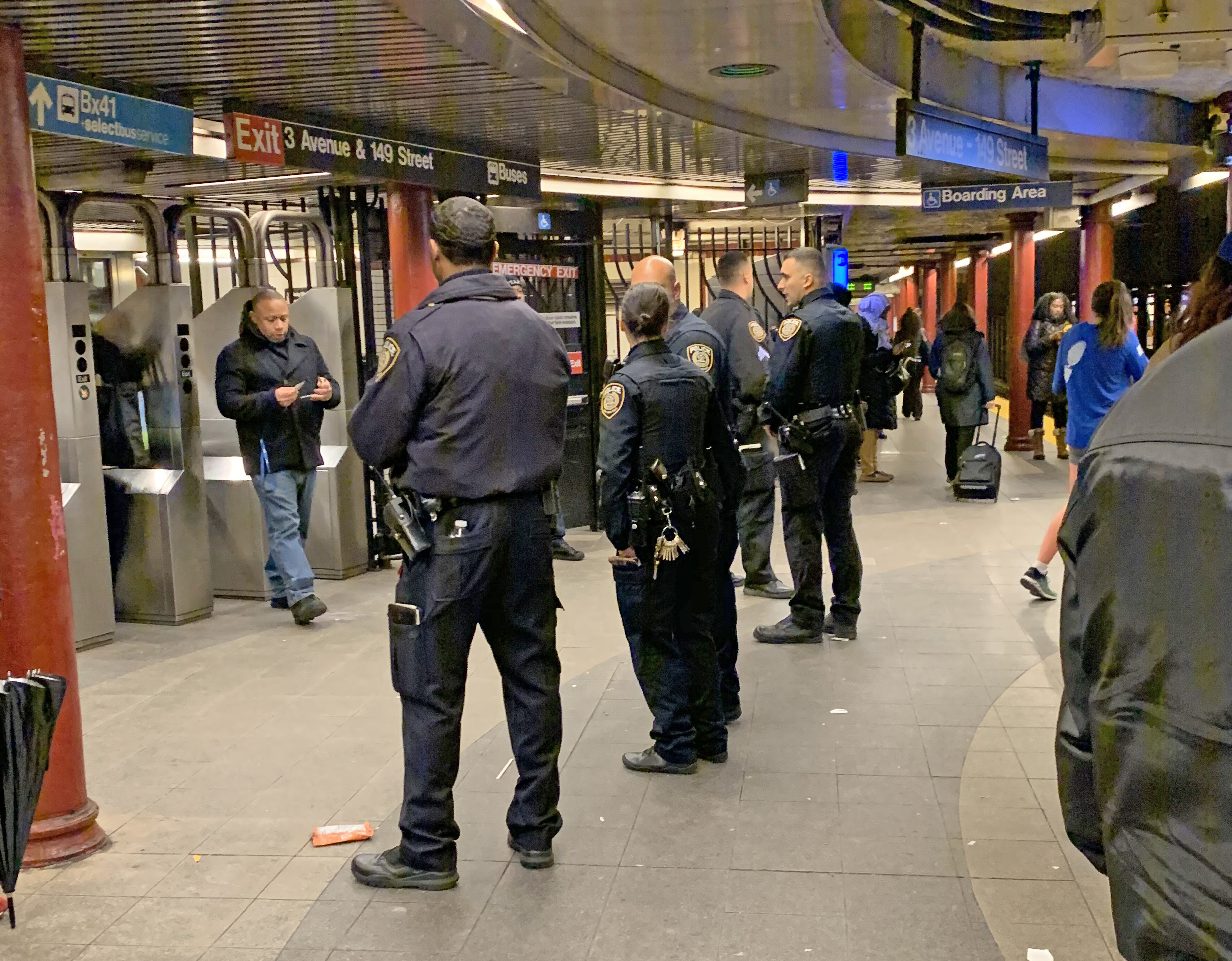
The Metropolitan Transportation Authority is hiring 500 more police officers to curtail fare evasion, and is waging a full-scale public-relations campaign on subways and buses to try to convince the public that it’s a problem. With police excesses mounting in the subways, some are recommending that the city switch to a “proof-of-payment” enforcement system, modeled after Europe.
New York Post columnist Nicole Gelinas, for one, thinks such a system would be better because the city could civilianize enforcement, and could create conditions for consistent enforcement, generating data for more-targeted enforcement efforts. Moreover, she wrote, having roving enforcement would "make it clear that the subway ... isn’t a homeless shelter, mental institution or backdrop for illegal vending and performing."
The MTA switching to "proof of payment" would be a mistake.
We have plenty of domestic examples of proof-of-payment transit systems, and they are problematic — both in terms of the anxiety and lost time and the opportunities they provide police to harass low-income people and people of color. In particular, Seattle’s Sound Transit light-rail system shows us that switching to proof-of-payment wouldn’t necessarily solve any of the MTA’s problems, and would be worse for riders.
For starters, enforcement issues abound. With turnstiles, you have a single entrance at which police can stop riders for non-payment, but proof-of-payment allows cops the opportunity to harass you literally anywhere in the transit system (and they will harass you). You can no longer zone out and read your book for the entire subway ride. Proof-of-payment means you will be interrupted and asked to pull out a card, ticket, or your phone. Forceful arrests on trains will become the norm.
A traditional proof-of-payment does away with turnstiles, and instead relies on fare-enforcement officers randomly selecting riders or train cars to ensure that people have paid (the MTA, of course, would not likely abandon turnstiles, given its $645-million investment in a new phone-based OMNY fare collection system). There are many kinds of payment systems, ranging from paper tickets to electronic systems. Seattle uses radio-frequency ID cards (called One Regional Card for All, or ORCA cards). When a rider enters a Fare Paid Zone in Seattle’s light rail system, he or she is supposed to press (“tap”) the ORCA card to an electronic reader, which beeps to let them know the fare has been paid.
As riders exit the Fare Paid Zone, they are supposed to press their card again to log off. (Fees vary based on the length of the trip.) New York already employs a proof-of-payment system on its Select Bus Service, where passengers use their Metrocards to buy a ticket from a machine before they board (through any door), and agents board the buses to check for tickets along the route. The Metro-North and LIRR commuter railroads also use proof of payment on trains. But the subway is busier and, with a lack of seating, far more chaotic than either of those.
It doesn’t matter whether fare-enforcement officers are police or civilians: They are in a position of authority with the ability to quickly call in officers with guns. Stories abound in Seattle of fare-paying customers having the police called on them after they accidentally tapped twice (which logs you out of the system, voiding the trip) or because they were not able to present their ORCA cards quickly enough.
Here in New York, we've already seen cops pull guns in a train car while apprehending an unarmed teen, cops brawling with kids, cops arresting vendors, and other problems with subway policing. There's no reason to believe that MTA fare enforcement would behave any better while handling riders on trains during proof-of-payment checks.
The city’s fare enforcement often focuses on stations in poor or black neighborhoods, with officers camped out at the turnstile. With proof-of-payment, they can just ride the trains and focus on poor or black people instead. Despite the fact that only 9 percent of Seattle's Sound Transit riders are black, 57 percent of people facing misdemeanors charges for fare enforcement in the last four years were black.
Moreover, proof of payment can easily be confusing in a subway system, as Seattle learned. With the lack of visual payment barriers, such as turnstiles, riders entering Fare Paid Zones often forget to pay. Once they’ve missed the electronic readers, they either need to backtrack to station entrances to tap their ORCA card, or they just continue on the train and hope to avoid fare enforcement.
Anxiety — already a problem in New York — has mounted in Seattle’s proof-of-payment system. Like the panic that seizes many about whether they left the stove on at home, Seattle riders often experience stress (especially as fare enforcement approaches) as they try to remember whether or not they actually paid their fare. By contrast, after swiping at a turnstile, riders can stop caring about anything related to payment. Not so with proof-of-payment!
Fare enforcement around proof-of-payment is unpleasant, annoying, and can be a serious threat to the safety or mental health of riders. Finding that card can be a serious hardship for some people, whether because they have disabilities or they are simply juggling groceries or young children. (I once witnessed fare enforcement in Seattle demand proof-of-payment from a man with motor-control issues in a power wheelchair. As he looked for the card, he accidentally slammed his legs and chair into the train door.)
For all these reasons, the MTA switching to such a system would be a step backward for the transit agency. In fact, a better idea might be to abandon the whole fare-evasion push and instead focus on providing and expanding free fares for minors, seniors, and lower-income groups.







